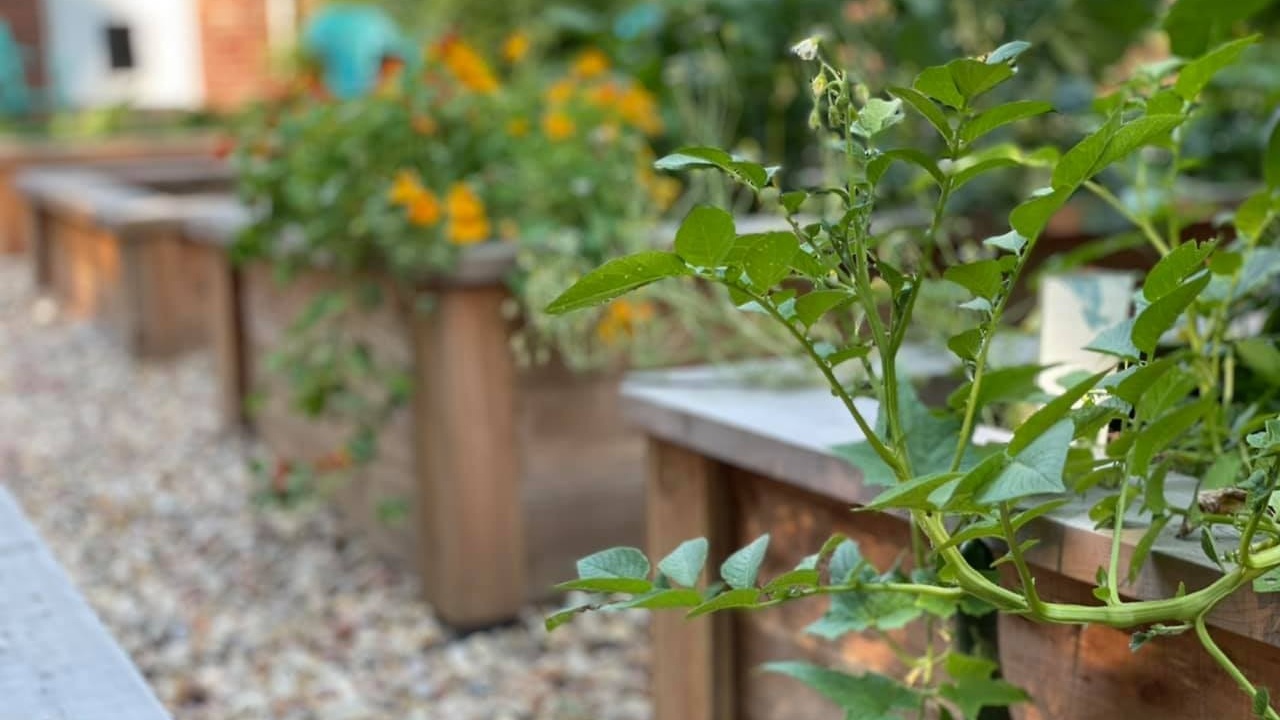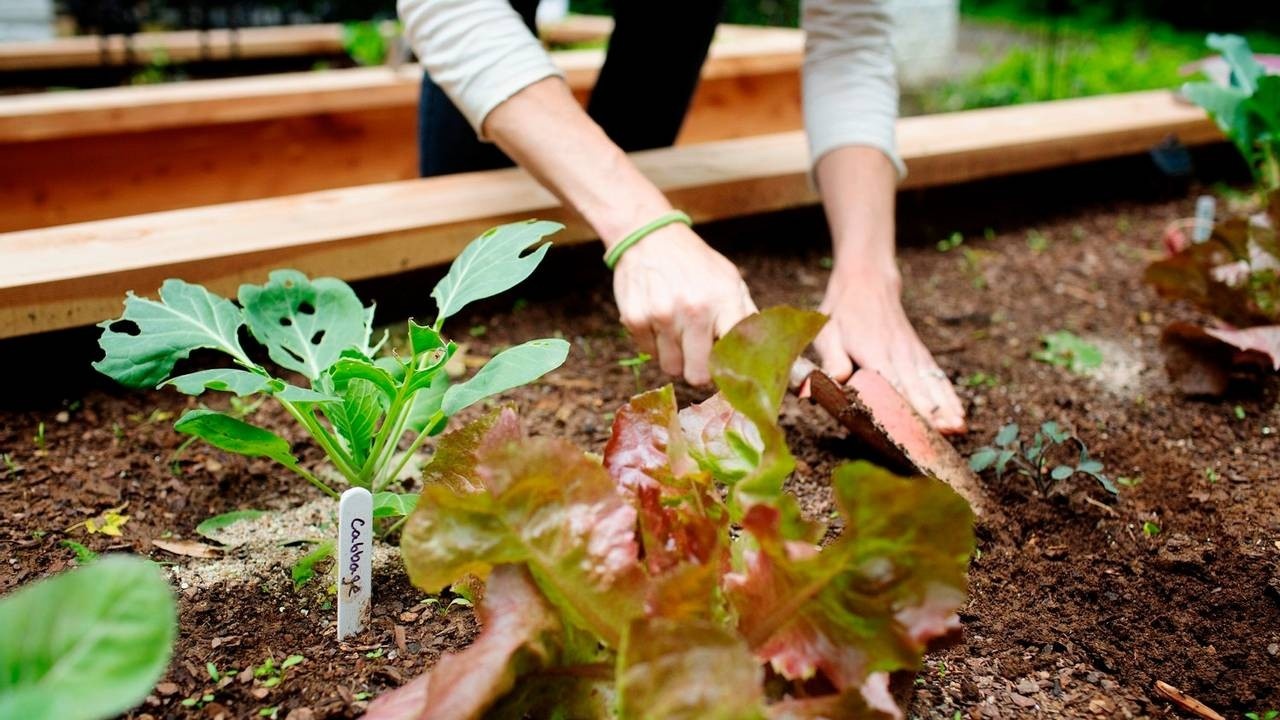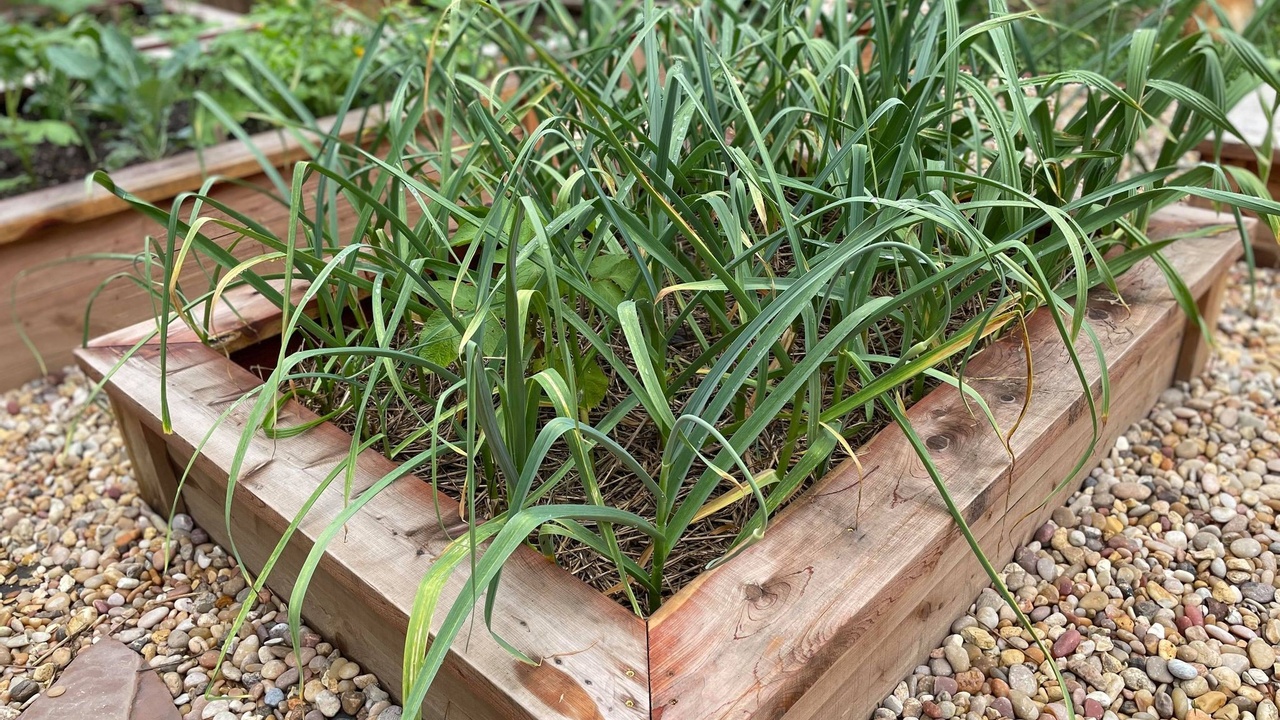Summerthyme Herb Workshop in Louisville, KY

|
|
|
|
Home gardening creates resiliency among supply chain

Garden Bed Restoration
Amy is my neighbor, client, and new to gardening. This year she tried tomatoes, cucumbers, basil, calendula, peppers, lettuces, green beans, and a few others. Tomatoes and cucumbers can be difficult plants for a beginner. They need to be in the soil longer, need more space, more sun, and more maintenance than others.
Her garden space is limited to an 8x2.5x2 bed. We interplanted her bed to grow in underutilized spaces to maximize her harvests. Her summer plants got huge which got a bit messy. Next year we will redesign her layout to avoid overcrowding, but overall a great first season!
This is her garden box. It's built with untreated Eastern Red Cedar, which is prone to lose its pinkish, purple color rapidly the first season. The sides facing the sun were silver, while the sides facing away from the sun were more orangish pink. Watch how quickly the pink & purple color returns with a bit of sanding and a coat of wood sealant!
Cedar Bed Restoration is a service we offe...
Fall Garden Planning

Summer Planting for Fall Gardens in KY

It's July in Kentucky and hard to think of fall when the summer temperatures are so hot, and the spring planting frenzy feels like its just over. However, it is time to start sowing seeds and and thinking about where your fall plants will be tucked into the garden. Think: carrots, beets, broccoli, cabbage, swiss chard, kales, and many other of your favorite fall fares. The smaller, faster growing greens like radishes, lettuces, spinach, etc will come later.
So where do we start? First of all, let's just say that there is still time to sneak in a few last minute summer plantings. Cucumbers, squashes, & green beans can all stand to be directly sown into the hot soil and will mature safely before threat of frost in late October.
Now let's familiarize ourselves with three plant families: Chenopods, Umbelliferous, and Brassicas. For edible plants, the Chenopod Family contains beets, swiss chard, and spinach. July & August are greet times to begin direct sowing beets and chard in...
When and how to harvest garlic in Kentucky?

Woohoo! Is your favorite part of June gardening the garlic harvest? Mine too! We've waited patiently as it grew for 9 long months. We mulched it, overwintered it, plucked off the scapes, FINALLY the bulbs formed, and its ready to come out of the garden! It's not only exciting because it will be so delicious, but it will also make space to plant something new... maybe pumpkins!
You know garlic is ready to pick when you notice the plant starting to "die back". Look for yellowing or browning of the bottom leaves. This in an indication of harvest readiness!
I like to do a "test dig" before popping up all my bulbs. Pierce the soil with a shovel or harvest fork about 6 inches from the plant. Go straight down then angle the fork to pop up the bulb. This will prevent puncturing the bulb. If you can see and feel well formed cloves, they are ready to harvest. If the bulb is simply round, the cloves need more time to form. Check again each week.
Fun facts about what to do next......


